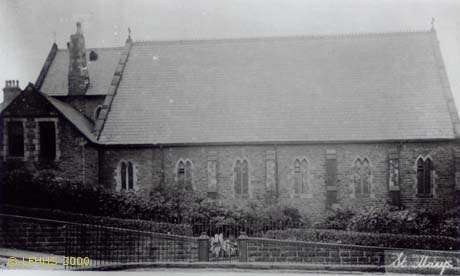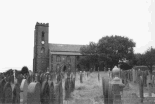
Dale Street, Bacup
In the late 11th century the Cistercian monks of Whalley Abbey were assigned a part of the Forest of Rossendale and made a settlement at Brandwood, and it was these monks who administered to the spares population of the area. In 1507 King Henry VII decreed that the area should be deforested and made open to settlement and cultivation. This led to an increase in the population and in 1511 the chapel of Our Saviour was built at Newchurch. With the reformation of the church in the reign of Henry VIII the chapel became part of the Established Church. Those who refused to attend the reformed church were subject to heavy taxes and fines and even death. For the next three hundred years very few Catholics remained in the area and those that did depended on the Towneley family of Burnley for spiritual ministration.
The 1778 and 1791 Acts of Tolerance gave more freedom to Catholics and the Catholic Emancipation Act of 1829 once more gave Catholics complete freedom worship openly.
The first Catholic mission in the area was at Sunnyside, Crawshawbooth. The Sunnyside print works had endured a long strike and John Brooks the owner recruited labourers from Manchester, which included Catholic families. These Catholics were provided with a building to worship in in Pinner Lane and were served by the priests of Towneley from 1828 until 1836 when Father James Carr became the resident priest. By 1842 the congregation was growing rapidly and so land was obtained at Constablee to build a church and in 1845 St James the Less was opened. In 1849 Father Thomas Unsworth, the priest at St James the Less established mission centres at Bacup and Haslingden.
In 1852 Father Henry Mulvany was sent by the Bishop of Salford to further the mission. He became the first Catholic priest to live in the town when he rented a room over Mr. Pilling's ironmongers shop in Market Street which could seat over 300 people and was used for services and as a school. With the help of the parishioners a new church was constructed on Dale Street in 1857. The school was moved to Wesley Place in 1862 and a new school was built at the side of the church in 1872. In 1871 the Catholic portion of Bacup Cemetery was consecrated and a mortuary chapel was dedicated to St Joseph.
The Rectors and Priests of St Mary's R. C. Church, Bacup
| 1852 - 1880 | Father Henry Mulvany | |||
| 1880 - 1884 | Father Thomas Steele | |||
| 1884 - 1903 | Father John Lane | |||
| 1903 - 1913 | Father William Moran | |||
| 1913 - 1944 | first Parish Priest 1918 | Father John Kiely | ||
| 1944 - 1952 | Father Morgan Walsh | |||
| 1952 - 1963 | Father Francis Shutt | |||
| 1963 - 1967 | Father John McDonnell | |||
| 1967 - 2010 | Father Michael Twomey | |||
| 2010 - | Fr Frank Thorpe |





